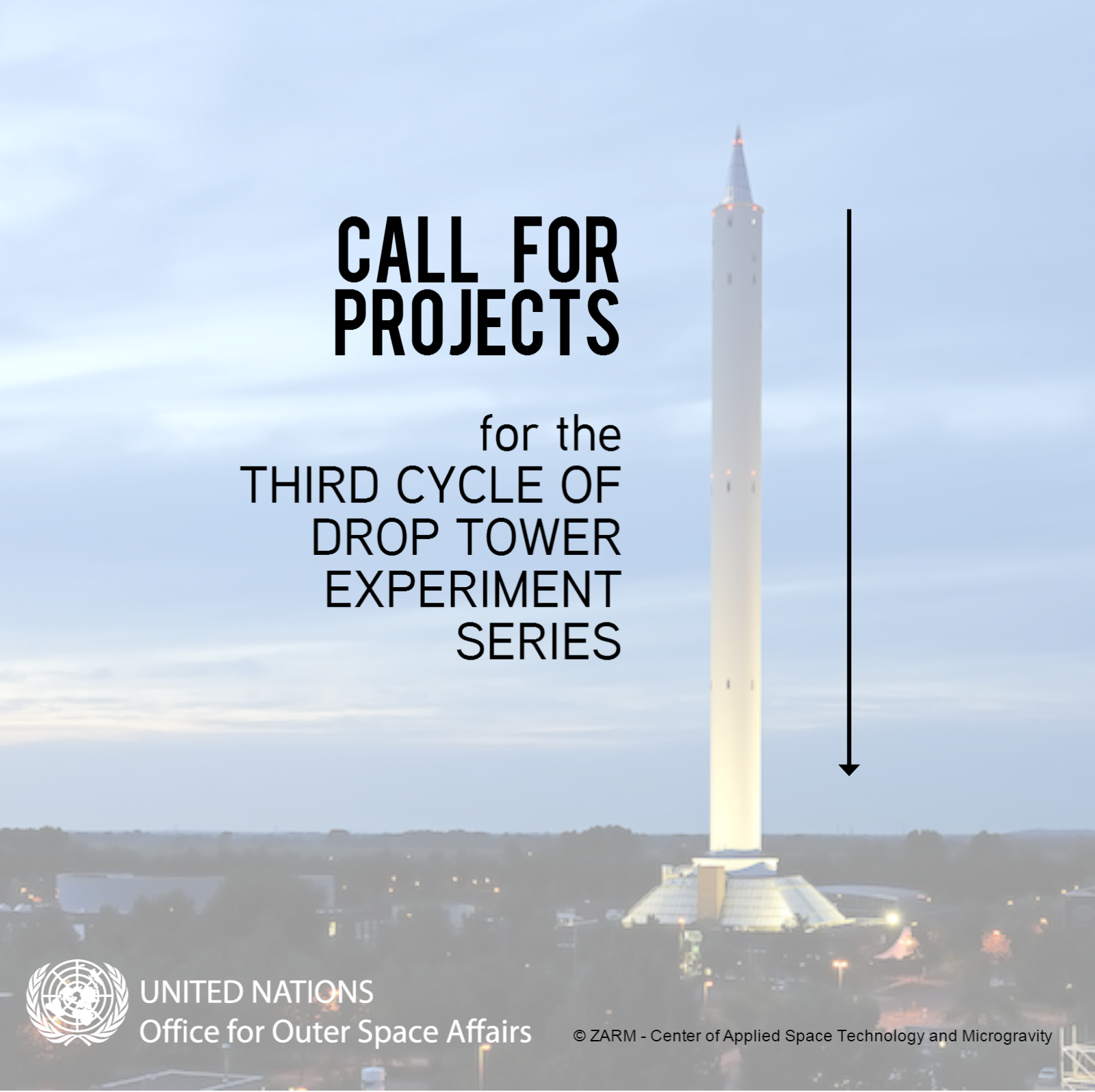Calls for applications - Drop Tower Experiment Series (DropTES)
At the Bremen Drop Tower
UNOOSA opens call for the Drop Tower Experiment Series at the Bremen Drop Tower

The Bremen Drop Tower was designed in 1988/90 by Horst Rosengart as a main laboratory of the Center of Applied Space Technology and Microgravity (ZARM). Being one of the few drop-towers in the world, it serves as a ground-based laboratory for short-term microgravity experiments. With a total height of 146 meters, the tower provides an opportunity for conducting drop experiments from the 110 meter drop shaft, achieving 4.74 seconds of weightlessness, or 9.3 seconds with the aid of a catapult.
Being the only laboratory of this kind in Europe, it is quite busy providing a workspace for a great number of scientists from different research fields like astrophysics, biology, chemistry, combustion, fluid dynamics, fundamental physics and materials sciences.
Every year around 400 drop experiments are carried out in Bremen. The study of gravity dependent phenomena is applicable for basic research as well as terrestrial application. Before using the drop tower, scientists are equipped with platforms in advance in order to prepare the experimental set-ups in their own laboratories. Only the final steps of experiments are carried out in Bremen.
The DROP TOWER EXPERIMENT SERIES is a fellowship programme initiated by the United Nations Office for Outer Space Affairs to assist students in the realization of their own real space/microgravity research projects. UNOOSA, in collaboration with the Center of Applied Space Technology and Microgravity (ZARM) and the German Aerospace Center (DLR), supports teams of Bachelor, Master and/or PhD students with four drops or catapult launches which have to be conducted within one week. The experiment has to be an integral part of their research, e.g. as Bachelor, Master and/or PhD theses.
BREMEN DROP TOWER FACTS:
Since the Start of Operation in 1990
- over 7000 drops/catapult launches have been conducted
- more than 160 different experiment types have been integrated
- international collaborations from 42 countries